An entire nation rejoiced as the Union Jack lowered and the ‘Tiranga’ fluttered high that August in 1947. The garden of free India blossomed, blood and sweat for which had been shed by hundreds and thousands of Indians. An iconic freedom struggle that it was, coastal districts of Karnataka too has its moments and people to boast of. Here are a few of them as we go back in time:
Rani Abbakka:
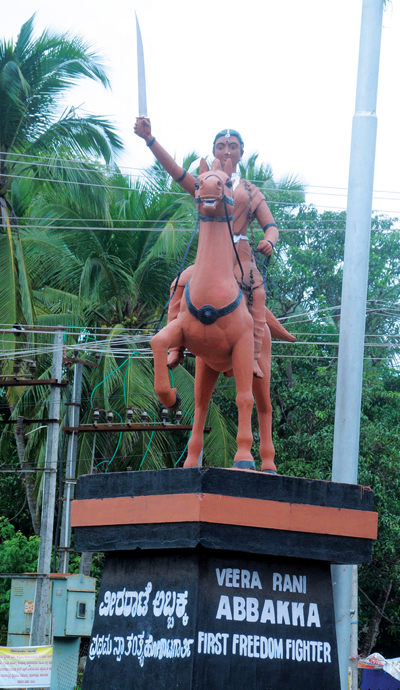
Abbakka Rani fought the Portugese in the late 16th century. The Portugese who had already made Goa their base, moved down south to Mangalore. Since the coastal city of Mangalore and Ullal provided a good base for spice trade, the Portugese wanted to have the area under their control. But they found resistance in Rani Abbakka who did not want the colonial power to take control of the local trade. Rani Abbakka showed exemplary courage and stomach for fight when the city of Ullal was captured by an army of soldiers sent by Portuguese Viceroy António Noronha. Abbakka Rani managed to escape and took refuge in a mosque and the very same night, launched a counter attack on the Portuguese, even killing General Peixoto the Portugese General, thereby affecting a retreat. Abbakka later lost battles to the Portugese as her husband sided with them and died revolting in the prison. Says Dr. Lokesh K M, Associate Professor, Department of History, Mangalore University: “That she took on the Portugese who had a really strong navy, with her little country boats and soldiers, was indeed brave of her”.
Tipu Sultan and Mangalore:
The British considered Tipu Sultan, popularly known as the ‘Tiger of Mysore’, as one of their biggest threats in South India. His father Haider Ali had already taken them on. Tipu carried the struggle forward after the death of Haider Ali and his having the upper hand against the British in the second Anglo-Mysore war elevated him to a higher level in historic circles. Mangalore happens to be a significant witness of this development as the war ended with the ‘Treaty of Mangalore’.
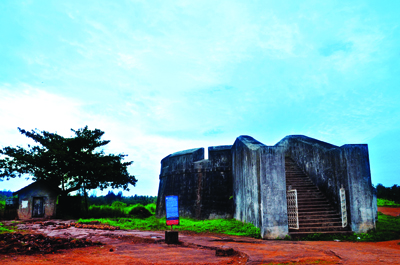
“It was a great victory in the sense that it was for the first time that an Indian ruler had defeated the British in the battlefield. The British had a mighty army and soldiers had come to fight Tipu all the way from Bombay”, says Dr. Kumaraswamy, Assistant Professor, Department of History, University College, Mangalore.
In 1799, Tipu died fighting the British in the fourth Anglo-Mysore war at Srirangapatna. After his death, the British handed over Mysore to the Wodeyars but kept possession of Mangalore. “The British wanted to retain Mangalore as it was more than beneficial for them as a port base for trade and also a vital link between Bombay and Madras. If you observe, the British had control of all the ports along the coast whether it was Karwar, Mangalore or Kasaragod”, says Dr. Lokesh.
Canara-Coorg rebellion (Amara Sullia Dange):
In the early 1800s, we find a rebellion against the British from the peasant class of Dakshina Kannada and Kodagu region combined. “After taking control of the coastal region following the death of Tipu Sultan, the British restructured the land revenue system. They were keen on cash payment of revenue. In 1830, there was a sort of depression state in the region and prices of agricultural produce dropped. This led to farmer associations of Sullia, Puttur and Coorg coming together to revolt against the British. These revolts are also known as ‘Koot’ rebellions. Kalyanappa of Coorg came to Mangalore to challenge the British but he eventually failed. Basically the effect of this rebellion felt in Dakshina Kannada was a spillover of a movement in Coorg”, says Dr. B Surendra Rao, former Professor of History, Mangalore University.
“This rebellion is remarkable in a way as rebels had managed to capture Mangalore for three days in spite of armed British personnel being deputed in the area. About 500-800 people attacked the Tahshildar’s office in Mangalore and possessed the city for a brief period of time, which was something unthinkable at that time”, says Dr. Kumaraswamy.
Barister Attavara Yellappa:
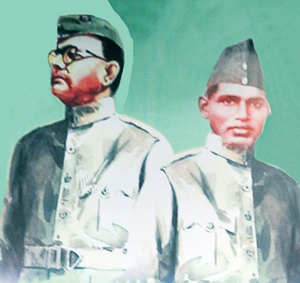
He was born on May 4, 1912 and studied at Attavar Higher Primary School, Milagres High School and Government College. He had passed BA at St Aloysius Evening College with first class. Though he was offered the job of Assistant Collector, he rejected it and left for London to become a Barrister. Securing first rank academically, after returning to India, he plunged into freedom movement and became the Commander-in-Chief of Indian Independent League started by Ras Bihari Bose.
Barrister Attavara Yellappa is remembered for his dedication for the cause of the country. Just a fortnight after his wedding, he had left to serve the country. In the recently held birth centenary celebrations of Barrister Yellappa in Mangalore, Dr. M Veerappa Moily, Union Minister of Corporate Affairs had said: “Barrister Attavara Yellappa preferred to die so that the people of the nation could live in peace. Yellappa was not only a good associate of Netaji Subhash Chandra Bose but also a man with great organizing capacity which he exhibited in starting and handling the affairs of ‘Azad Bank’ of INA. This shows that he was the real son of South Canara who had the banking skill in his blood”.
Karnad Sadashiva Rao

An ardent follower of Mahatma Gandhi, Karnad Sadashiva Rao made Gandhian philosophy and activities popular in the coastal region. He is known for his popularization of Khadi, Satyagraha, and other Gandhian methods and movements in coastal region. K S Rao gave up legal practice and involved himself in Satyagraha movements. He also participated in the famous Dandi March with Gandhiji. K S Rao was one of the towering Gandhian leaders in Karnataka and he had served as the Karnataka Pradesh Congress Committee chief as well. He is also looked at as a social reformer who fought for the Dalits and the downtrodden, women and widows.
“Karnad Sadashiva Rao was a true Gandhian. He hailed from a well-off family but died pennyless. Everything that he had, he spent on the poor. There is also this incident of his son’s death. It is said that he was delivering a speech when he was informed about his son’s death. Such was his dedication towards the cause of the country that he carried on, completed his speech and then proceeded to see his son”, says Dr. Lokesh.
M G Haider:
A leader who grew under the shadow and inspiration of Karnad Sadashiva Rao, M G Haider of Ullal is also remembered for his active participation in the Gandhian movement.
In 1920, M G Haider attended a public programme at Mangalore where Mahatma Gandhi and Shaukath Ali had come down as part of the non-cooperation cum Khilafat movement campaign. Inspired by the speech of Moulana Shaukath Ali and on Gandhiji’s call, he discontinued his studies and became a part of the national movement. He also participated in the Ahmedabad Congress session in 1921.
Karnad Sadashiva Rao had made M G Haider the in-charge of ‘Khadi Bhandar’ in Mangalore. According to records, when floods broke out in the region, M G Haider, as per the directive of K S Rao, had actively engaged in mass preparation and distribution of Khadi clothes to the flood victims.
Karnad Sadashiva Rao had made M G Haider the in-charge of ‘Khadi Bhandar’ in Mangalore. According to records, when floods broke out in the region, M G Haider, as per the directive of K S Rao, had actively engaged in mass preparation and distribution of Khadi clothes to the flood victims.
Joachim Alva:
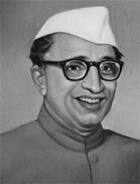
He was jailed twice by British Indian authorities on charges of sedition. In jail, he spent time with personalities like Sardar Vallabhbhai Patel, Jayaprakash Narayan, and Morarji Desai. In 1934, Mahatma Gandhi wrote a letter to Alva to inform him that he had missed him at Yerwada Jail because of his early release.
Margaret Alva, the prominent Congress leader from Mangalore, is the daughter in law of Joachim Alva.
Narayana Shetty Kille:
Narayana Shetty Kille of Kulur Hosamane was working in the postal department in Mumbai. In 1920-21, on Gandhiji’s call, he quit the job and came back to Mangalore to participate in the civil disobedience movement. In 1930, he was put behind bars for a year for participating in ‘Salt Satyagraha’. Later, owing to the Gandhi-Irwin pact, he was released.
He took to serving Dalits and fought against their oppression after being inspired by Mahatma Gandhi’s speech in Mangalore in 1934. According to Kaiyyara Kinnanna Rai, veteran poet and activist, Kille was a good orator himself.
Ankola Satyagraha:
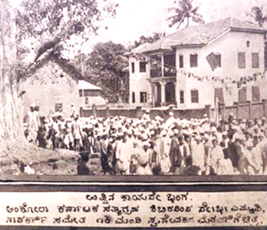
“Gandhiji was a smart leader. To carry on his Satyagraha, he chose salt, an ordinary commodity which is used by each and every one as his tool to mobilise public participation against the British. Besides, salt is something available naturally. He raised this question among the masses as to why we Indians need to pay taxes to the British for salt, when we can manufacture it on our own. This movement became a hit with the masses and the famous Dandi march is a witness to that. From Karnataka, one of the Congressmen who participated in the march at Dandi was Mailara Mahadeva of Sirsi. After his return to Uttara Kannada district, he shared his experiences with the people and hence, a large number of people participated in the ‘Salt Satyagraha’ movement at Ankola. More than 100 people were imprisoned for taking part in that movement in Ankola”, says Dr. Kumaraswamy.
B V Kakkilaya:
B V Kakkilaya hailed from a prestigious family from Bevinje in Kasargod district. He joined St Aloysius College in the year 1937 for intermediate studies. He became an active member of the student movement against the British rule. He joined All India Students’ Federation to voice his indignation. He also showed his patriotism and humanism by serving selflessly in the flood-affected areas during his college days.

Says Dr. Surendra Rao: “The likes of Kakkilaya and Krishna Shetty were inspired by M N Roy’s thinking and the communist movement. Their view was that the Indian National Congress, although claimed it fought a nationalist struggle, was not doing enough for the poor and the labour class. Kakkilaya in particular played an important role in organizing the labour unions in this region. The likes of Kakkilaya had the Soviet model before them and they thought that India needs to go the USSR way, which was a success story that time. Later on of course, the USSR fell apart”.
National icons visit Mangalore:
After the formation of Indian National Congress, many national icons came down to Mangalore to provide momentum to the national movement in the coastal region. “The likes of Mahatma Gandhi, Jawaharlal Nehru and others concentrated a lot on Mangalore as they realized that the scope for freedom movement to grow in Mangalore was more in Karnataka when compared to Mysore, as Mysore was still ruled by Wodeyars and the people were largely happy with the king’s rule, although the British were the ultimate masters. That is why you find Mahatma Gandhi visiting Mangalore two to three times. In those days, Sarojini Naidu would accompany Gandhiji wherever he went and therefore, she happened to come to Mangalore too. On one occasion, it is said Gandhiji sat at a place at Bawtagudda and enjoyed the sight of the sunset there. The Nehru Maidan of today is called so because Jawaharlal Nehru had given a speech there. Rabindranath Tagore too had come to Mangalore and this very monument (Government College) is a witness to that visit of his. Our auditorium has been named ‘Ravindra Kala Bhavana’ also in the memory of his visit”, says Dr. Kumaraswamy.
Suguna Karnad Desai, daughter of Karnad Sadashiva Rao, in one of her writings published in Dr. Sooryanath Kamath’s book ‘Swatantrya Sangramada Smratigalu’ describes Gandhiji’s visit to Mangalore in this fashion: “In August 1920, when Gandhiji had come down to Mangalore, the excitement levels of people had touched a new high. I was chosen to garland Gandhiji. I was still a little girl then. I, along with my sister climbed the stage and placed our bangles and other jewellery before Gandhiji. No sooner we did that, ladies in the gathering got up one after the other, and placed their ornaments before Gandhji. That sight was remarkable”.
Mangalore contributes as an educational hub:
Mangalore had been an educational hub back then too and this contributed in the growth of nationalist thinking in the region. “To be honest the Dakshina Kannada and Udupi districts do not have anything fascinatingly heroic to boast about as far as freedom struggle is concerned. Barring a few peasant revolts here and there and a lathi charge in Mangalore during the Quit India movement, we do not possess something very heroic that had taken place in our region compared to other parts of the country or even Karnataka. However, Mangalore being an educational hub, did contribute in the growth of nationalist movement to some extent. The Basel Mission had established schools here. St Aloysius College was there. The Government College had already come up. There were other educational institutions too. In all, Mangalore was a centre of education. The more people got educated, the more it helped them read about the various movements and it also helped migration. Majority of the ones who took to nationalist movements are people who obtained English education. The Bunts Hostel in Mangalore was established with nationalist feelings, with an objective that the Mangalorean community must march forward in education’, says Dr. Surendra Rao.
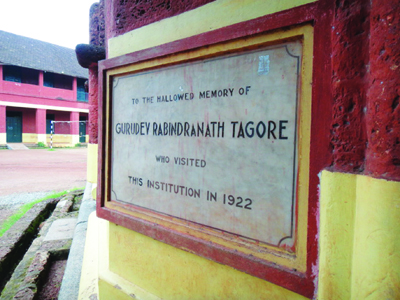
Press and poetry were also tools used quite well in the coastal region in building national movement. “The newspaper ‘Swadeshabhimani’ constantly highlighted protests and demonstrations against the British government. Through this newspaper, speeches of Nehru, Gandhi and other leaders delivered in various parts of the country were made available to the people of coastal region”, says Dr. Kumaraswamy.
Much like Rabindranath Tagore and Allama Iqbal who revived nationalism in people through their poems and writings, poets and writers




Comments
Add new comment